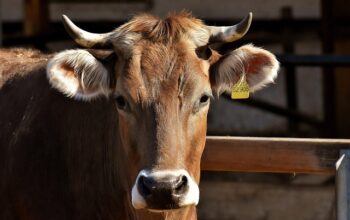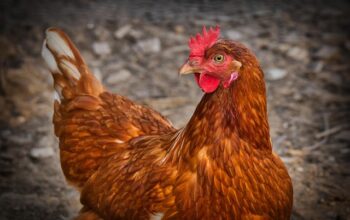Farming in Ontario requires understanding specific regulations for fencing, with key considerations including height, materials, location, and safety, especially for electric fences. Farmers should adopt sustainable practices and choose between sturdy barriers for livestock or decorative picket fences for boundary marking, tailored to climate, terrain, and intended use. Fence Right Inc offers a variety of farm-specific fences, providing expert guidance on material selection, installation techniques, and regular maintenance to ensure durability against harsh winters and active livestock. Before installing, farmers must understand local regulations and permit requirements, with Fence Right Inc assisting in selecting suitable fence types while ensuring legal compliance for robust, long-lasting fences.
In Ontario, a robust farm fence is more than just a barrier; it’s a vital investment in your property and livestock protection. Whether you’re looking to create a secure pasture, protect crops from wildlife, or enhance landscape aesthetics, Understanding farm fencing requirements is key. This guide delves into the seven essential considerations for installing a suitable fence for farms in Ontario, featuring insights from Fence Right Inc, catering specifically to farmers seeking solutions for their ON properties.
Understanding Farm Fencing Requirements in Ontario
Farming in Ontario comes with specific regulations and requirements when it comes to fencing. Understanding these rules is essential for any farmer looking to install or maintain farm fences, especially when ensuring compliance with local laws and standards. Fence Right Inc, a leading provider of fence solutions for farms in Ontario (Fence for Farms ON), highlights several key considerations that farmers should keep in mind.
First and foremost, farmers need to familiarize themselves with the Ontario regulations governing farm fencing. These guidelines cover aspects like fence height, materials used, location, and safety standards. For instance, electric fences are a common option for many farms, but they must be installed correctly and meet specific requirements to ensure animal safety and comply with ON laws (Fence for Farms ON). Additionally, farmers should consider the environmental impact of their fencing choices, integrating sustainable practices where possible.
Choosing the Right Fence Type for Your Farm
When considering a fence for your farm in Ontario, selecting the right type is paramount to meet both aesthetic and functional needs. Factors such as climate, terrain, and intended use will dictate the most suitable option. For instance, livestock farming may require sturdy, durable barriers like post-and-rail or chain-link fences, while boundary marking can be achieved with more decorative options like wooden picket fences.
Fence Right Inc offers a range of fence types designed specifically for farms in Ontario (ON). From high-end aesthetics to heavy-duty security, their offerings cater to diverse needs. For a balanced option, vinyl or wood fences provide excellent protection against intruders while enhancing the curb appeal of your farm. Choose wisely based on your unique requirements to ensure a durable and efficient fence that stands the test of time and Ontario’s varying weather conditions.
Installation and Maintenance Considerations
When considering a farm fence in Ontario, installation and maintenance are key aspects to get right. For instance, choosing the suitable fencing material is essential for durability and long-term performance. Fence Right Inc offers expert guidance on selecting materials that align with local climate and conditions. Proper installation techniques ensure fences stand strong against harsh winters and active livestock. Regular maintenance, such as repairs and painting, can extend the life of these structures significantly. This proactive approach not only keeps your farm secure but also enhances its overall aesthetic appeal.
Farms in Ontario benefit from Fence Right Inc’s experience in designing farm fencing that is both functional and aesthetically pleasing. Our team understands that a well-built fence serves as a valuable investment, protecting crops and livestock while contributing to the beauty of your countryside property. Whether you’re looking for a sturdy wooden fence or a durable vinyl option, we help you ‘Fence Right’ for your specific needs in ON.
Local Regulations and Permits for Farm Fencing
When planning a farm fence in Ontario, understanding local regulations and permit requirements is crucial before breaking ground. These rules are designed to maintain agricultural sustainability and community safety. Fence Right Inc., a leading provider of fence solutions for farms in Ontario (ON), advises farmers to familiarize themselves with regional by-laws governing fence construction, materials, and height restrictions. Failure to comply can result in penalties, delays, or even the requirement to remove existing fencing.
Permits are often necessary for new installations or substantial modifications. Farmers should contact their local municipal offices early in the planning process to determine specific requirements. Fence Right Inc. offers expert guidance on navigating these regulations, ensuring farmers select the appropriate fence type and design while adhering to all necessary permits. Their goal is to help Ontario farmers secure robust, long-lasting fences that meet both agricultural needs and legal standards.
When considering a fence for your farm in Ontario, understanding the key requirements and having the right type installed is essential. Fence Right Inc offers expert guidance to help you navigate local regulations and select the best option for your property. From initial planning and installation to ongoing maintenance, ensuring your farm fencing meets the unique needs of your operation is a valuable investment. Choose wisely with a fence that suits your Ontario farm’s specific requirements, enhancing both functionality and aesthetics.




